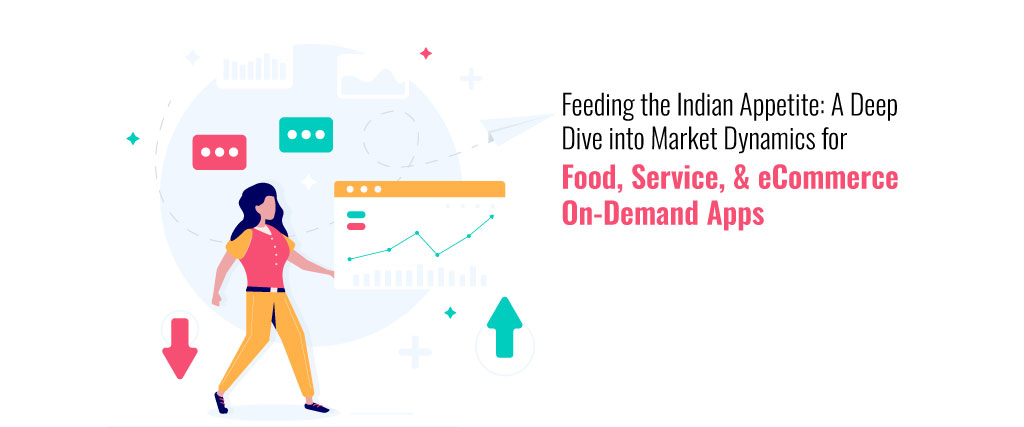Feeding the Indian Appetite: A Deep Dive into Market Share Dynamics for Tiffins, Food, Service, and eCommerce On-Demand Apps.

‘Food On Demand’ is not new. Dabbawalas of Mumbai, the oldest and most popular tiffin service in India, has been serving the city for many decades and has touched precision to the extent of achieving 7 Sigma quality standards. In recent times, the emergence of technology has transformed how individuals purchase, order food, and access services in India's dynamic and varied environment. With the digital transformation happening in every business and the widespread use of smartphones, millions of Indians now depend heavily on on-demand apps for their everyday needs. This blog examines the dynamics of on-demand app market share in India with a particular emphasis on food delivery, other services, and online shopping. We explore the reasons behind their appeal, the key figures in each area, and the fierce competition that characterizes this quickly changing market.
The Appetite for Convenience
India's on-demand app marketplace is fueled by the insatiable desire for convenience. These apps have grown quickly because people want convenience, speed, and efficiency in their daily lives. On-demand apps easily meet a variety of needs, such as ordering takeaway from a favorite restaurant, scheduling a cab for a hassle-free commute, or doing grocery shopping from home.Food Delivery Apps: Satisfying the Palate
The on-demand app ecosystem in India has become mostly dependent on food delivery services, drastically changing how its citizens eat. In this section, we'll go into more detail and examine the reasons behind the popularity of apps that deliver meals in India.Variety of Cuisine Right at Your Door:
India is well known for its wide range of gastronomic options. Users of food delivery apps can try a wide variety of foods from popular chains, specialty restaurants, and neighborhood eateries. Whether it's delicious dosas, luscious biryani, or global fast food, these apps act as entry points to a wide variety of cuisines. Comfort and Simplicity:The sheer convenience that food delivery apps provide is one of the main factors contributing to their success.
You may save the stress of cooking or going out to eat by having your favorite dishes delivered right to your door with a few taps on your smartphone. One of the main selling points for families, students, and working professionals is this convenience.Key Players and Their Approaches:
Zomato and Swiggy are the two main companies in the Indian meal delivery business. They compete fiercely, each attempting to use creative tactics to outshine the other. Among these tactics are:-
- Discounts and Promotions: In an effort to draw and keep consumers, Zomato and Swiggy often provide discounts and promotions. Offers such as "Buy One Get One" and incentives with cashback are typical.
- Growth Into More Compact Cities: These apps have extended their reach to smaller towns and cities as a result of realizing the possibilities outside of major cities. Their user base and reach have grown as a result of this expansion.
- Diversification of Services: Zomato and Swiggy have expanded the range of services they offer in order to stay competitive. They have experimented in running their own delivery-only restaurants out of cloud kitchens. Additionally, both platforms also provide grocery delivery, which strengthens their position in the food chain.
Challenges and Future Trends:
Apps for meal delivery are still popular, but they have a number of difficulties. There are constant worries about preserving food quality while it is being transported, making sure delivery staff are safe, and handling intricate logistics. The COVID-19 epidemic brought attention to the need for strict safety regulations and hygienic standards by causing a spike in food delivery orders.The Future of Delivery of Food
Apps for meal delivery seem to have a bright future in India. As we can expect:- Integration with E-Commerce: Food delivery services may incorporate additional e-commerce functionality, enabling customers to purchase groceries and other necessities in addition to their preferred meals.
- Improved Technology: You may anticipate faster service and more precise delivery tracking among other advancements in app technology.
- Health-Conscious Options: As health consciousness grows, food delivery apps can include healthier dining alternatives, catering to the wellness and fitness trends among consumers
